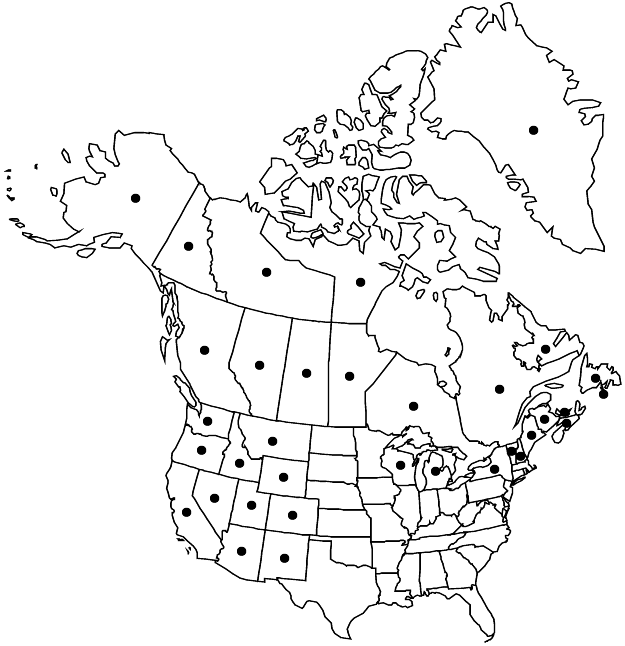Difference between revisions of "Pyrola minor"
Sp. Pl. 1: 396. 1753 ,.
FNA>Volume Importer |
imported>Volume Importer |
||
| (5 intermediate revisions by 2 users not shown) | |||
| Line 33: | Line 33: | ||
-->{{#Taxon: | -->{{#Taxon: | ||
name=Pyrola minor | name=Pyrola minor | ||
| − | |||
|authority=Linnaeus | |authority=Linnaeus | ||
|rank=species | |rank=species | ||
| Line 48: | Line 47: | ||
|publication year= | |publication year= | ||
|special status= | |special status= | ||
| − | |source xml=https:// | + | |source xml=https://bitbucket.org/aafc-mbb/fna-data-curation/src/2e0870ddd59836b60bcf96646a41e87ea5a5943a/coarse_grained_fna_xml/V8/V8_723.xml |
|subfamily=Ericaceae subfam. Monotropoideae | |subfamily=Ericaceae subfam. Monotropoideae | ||
|genus=Pyrola | |genus=Pyrola | ||
Latest revision as of 22:45, 5 November 2020
Plants rhizomatous, (0.6–)1.2–2.1(–3) dm. Leaves: petiole 2–32 mm, channeled adaxially, glabrous; blade not maculate, dull and light green abaxially, dull to shiny and green to dark green adaxially, oblong-elliptic, ovate, obovate, or round, (5–)20–30(–42) × (7–)14–27 mm, subcoriaceous, base rounded to subcordate, margins crenulate to crenulate-serrulate, apex obtuse or rounded. Inflorescences 1 per stem, 3–11(–17)-flowered; peduncular bracts absent or 1–2, lanceolate to ovate or obovate, 4–6.5 × 0.7–2 mm, chartaceous or membranous, margins entire or obscurely erose-denticulate; inflorescence bracts lanceolate to ovate-lanceolate, equaling or longer than subtended pedicels, (3–)4–5(–7.3) × 0.5–1.4 mm, chartaceous. Pedicels 2.5–4.5 mm. Flowers radially symmetric; calyx lobes appressed or spreading in fruit, green or pink with margins hyaline to white or pinkish, deltate, 1.3–1.8 × 1.3–1.8 mm, margins entire or erose-denticulate, especially distally, apices acute to obtuse or, rarely, acuminate; petals white or pink, obovate to broadly elliptic, (3–)3.3–5 × 2.6–3.8 mm, margins entire; stamens 2.2–3.5 mm; filament base 0.1–0.4 mm wide; anthers 0.8–1.4 mm, apiculations absent or less than 0.1 mm, thecae creamy white to greenish white, often yellowish brown distally, tubules absent, pores 0.1–0.3 × 0.05–0.1 mm; ovary smooth; style included, straight, (0.5–)0.8–1.5(–1.8) mm; stigma 0.9–1.3 mm wide, lobes spreading. Capsules depressed-globose, 3–4 × 4.5–5.4 mm. 2n = 46.
Phenology: Flowering Jun–Aug.
Habitat: Moist, often mossy sites in coniferous and boreal forests, thickets, stream banks
Elevation: 10-3700 m
Distribution

Greenland, St. Pierre and Miquelon, Alta., B.C., Man., N.B., Nfld. and Labr., N.W.T., N.S., Nunavut, Ont., P.E.I., Que., Sask., Yukon, Alaska, Ariz., Calif., Colo., Idaho, Maine, Mich., Mont., Nev., N.H., N.Mex., N.Y., Oreg., Utah, Vt., Wash., Wis., Wyo., Eurasia.
Discussion
Pyrola minor and P. asarifolia are broadly sympatric in North America. Scattered hybrids between these species have been reported, mostly from the area of sympatry (E. Haber 1984). Haber (1993) found herbarium evidence for at least one case of hybridization between P. minor and P. chlorantha. T. W. Böcher (1961) discussed hybrids between P. minor and P. grandiflora from western Greenland.
The straight style and actinomorphic corolla of Pyrola minor have been interpreted as paedomorphic conditions (J. V. Freudenstein 1999b). Among three northern European species of Pyrola studied by J. T. Knudsen and J. M. Olesen (1993), the shifts in floral morphology in P. minor were found to be associated with a significantly higher capacity for self-pollination.
Selected References
None.